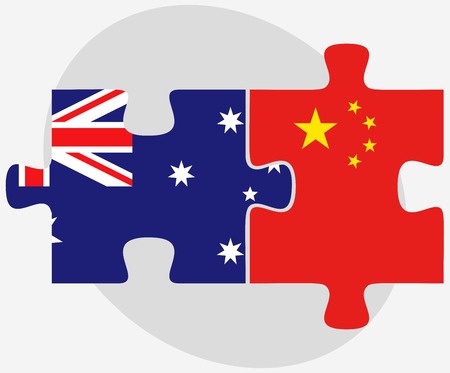25 June, 2015
The legal text of the China-Australia FTA (ChAFTA) has now been signed and publicly released. The text sets out the detail of the specific commitments agreed by Australia and China and provides greater transparency around each country’s regulatory framework. Already Australia’s largest trading partner, the ChAFTA will be the launch pad for further expansion of this important trade and investment relationship.
Ten years after negotiations of the agreement first started, the ChAFTA was signed on 17 June 2015 by Australia’s Minister for Trade and Investment, Andrew Robb and China’s Commerce Minister, Gao Hucheng.
The ChAFTA will enter into force upon the completion of domestic legal and parliamentary processes by each country. In Australia, the legal text will now be reviewed by the Australian Parliament’s Joint Standing Committee on Treaties and the Senate Foreign Affairs, Defence and Trade References Committee.
Bringing Down The Tariff Walls
Tariff cuts will be applied by both countries across a wide range of industries. According to the calculations released by the Australian Government, on day one of the ChAFTA, more than 85 per cent of Australian goods exports will be tariff free, rising to 95 per cent on full implementation.
For Australian commodity exporters, there will be progressive tariff reductions over a five year period in respect of a wide range of products including dairy, beef and sheep products, wine and horticulture.
In the grain sector there will be an immediate reduction in tariff rates applying to barley, sorghum, oats and buckwheat. Gradual elimination of tariffs will apply to malt, wheat gluten and pulses.
In the resources and mining sectors tariff reductions will apply to various key exports including coking coal, thermal coal, refined copper and alloys.
Importantly for Chinese manufacturers, Australian tariffs will be reduced to zero across five years in respect of steel, aluminium, plastics, clothing and footwear, and processed food imports.
Unlocking The Services Market
The listing of services commitments in the ChAFTA is unusual in that the parties have adopted different approaches to listing their services commitments. Australia has adopted a negative listing approach whereby it makes commitments in all sectors and then sets out its non-conforming measures. China has adopted the WTO-approach of a positive list, setting out those specific sectors in which it is prepared to make commitments and specifying limitations to those commitments.
In the insurance sector, China has improved its WTO commitments by granting Australia preferential access to its third party liability motor vehicle insurance market.
More broadly on financial services, there is a specific financial services side letter in the ChAFTA which sets out an agreement between the Australian Prudential Regulatory Authority (APRA) and the China Banking Regulatory Commission (CBRC) to cooperate on issues of mutual interest and to expeditiously process applications made by financial institutions for the establishment of subsidiaries, branches and sub-branches. Other areas highlighted for cooperation are anti-money laundering, financing of terrorism, foreign exchange regulation and private equity and funds investment.
Australia will be granted greater access to China’s healthcare sector with the ability to open wholly foreign-owned hospitals in several Chinese provinces and aged care facilities throughout China.
In the hospitality and tourism sectors, Australian operators will be permitted to construct, renovate and operate hotel and restaurant establishments through wholly foreign-owned subsidiaries and operate travel agencies and tour companies.
Investment… And Disputes
Chinese investment in Australia has increased ten-fold in the last ten years yet still only accounts for 2.3% of total foreign investment. The ChAFTA sets the scene for the continued enhancement of the investment relationship between the two countries.
In non-sensitive sectors, China will benefit from an increase in the foreign investment screening threshold limits to USD 1.094bn (in line with the approval limits that Australia has already extended to New Zealand, the United States, Chile, Korea and Japan). All direct investment by Chinese state-owned enterprises will continue to be subject to foreign investment screening and investment restrictions will remain in respect of investment in agricultural land and agribusiness.
The investment chapter includes a most favoured nation provision which means that both parties have committed to extend to each other any more favourable treatment that may be provided to other countries in the future.
In line with the Australian Government's stance that it will accept an Investor-State Dispute Settlement (ISDS) framework on a case-by-case basis, it has agreed to such a mechanism in the ChAFTA. The ISDS provisions allow Chinese and Australian investors recourse to arbitration where they believe any action taken by the respective government is in breach of commitments made under the Investment Chapter of ChAFTA.
Interestingly, the text is a departure in several respects from the ISDS provisions recently agreed by Australia in the Korea-Australia FTA (KAFTA).
- Consistent with a number of arbitral awards concerning the scope of operation of ISDS provisions, the ChAFTA includes detailed wording around the scope of its operation. ChAFTA permits claims that relate to a dispute between a party and a state regarding a covered investment made in accordance with the state's law, regulations and investment policies.
- The ChAFTA provides for the appointment of a sole arbitrator and allows for a mechanism in circumstances where the parties cannot agree on whom should be appointed. The ChAFTA also requires the Investment Committee to establish a list of individuals who are willing and able to serve as arbitrators.
- On the issue of transparency, the ChAFTA provides that the respondent state has the discretion to conduct the hearing in public or private and may decide whether the parties' submissions, and the transcripts of the proceedings, may be published.
- One of the side letters also sets out an agreement that China and Australia will enter into consultations within the next 12 months on the future application of the United Nations Commission on International Trade Law (UNCITRAL) Rules on Transparency in Treaty-based Investor Disputes.
- The ChAFTA provides for a review procedure whereby the parties shall commence negotiations within three years of the agreement, with a view to establishing an appellate mechanism to review awards on questions of law.
Notably, to date China has only been subject to two investor-state arbitrations, the most recent of which being registered by the Secretary-General of ICSID on 4 November 2014 involving a South Korean property developer.
Getting The Measure Of Trade Remedies
Given the increasing number of trade measures which are applied to Chinese imports by Australia, the commitments made in the ChAFTA on trade remedies will likely be very important in the future. There are new provisions around transparency and consultation in respect of the notification of proposed countervailing measures and opportunities to discuss proposed measures. The parties have also agreed to hold a regular high level dialogue on trade remedies.
More Yet To Come
The “future work program” is an important feature of the ChAFTA and will provide a platform for ongoing liberalisation between China and Australia, particularly in the services and investment context.
A general review of the ChAFTA will be undertaken within three years of its entry into force.
The investment legal framework will be reviewed within the next three years with a view to commencing negotiations for a comprehensive Investment Chapter to be included in ChAFTA. The additions will build on the Articles relating to investment already agreed, and also include additional Articles relating to other mutually relevant issues such as minimum standard of treatment, expropriation, ISDS and performance requirements (amongst others).
In respect of trade in services, the ChAFTA establishes a “Committee on Trade in Services” that will meet within two years to review the implementation and operation of the agreement and recommend measures to promote and increase trade in services. Similarly, the parties will meet every two years to review the Articles relating to trade in services, as well as to consider other trade services issues, with a view to implementing further liberalisation measures.
In terms of future liberalisation in the financial services sector, representatives from authorities responsible for financial services, such as the People's Bank of China and the Reserve Bank of Australia, will make up a “Committee on Financial Services”. This Committee will meet every two years to supervise the implementation of the ChAFTA in relation to financial services and to consider issues regarding financial services, including ways to cooperate more effectively in the financial services sector.
All of these measures are aimed at ensuring the effective implementation of the ChAFTA and will encourage even further liberalisation of trade and investment between China and Australia into the future.
For further information, please contact:
Michael Crips, Partner, Clyde & Co
michael.cripps@clydeco.com
Maurice Thompson, Partner, Clyde & Co
maurice.thompson@clydeco.com
Avryl Lattin, Clyde & Co
avryl.lattin@clydeco.com






